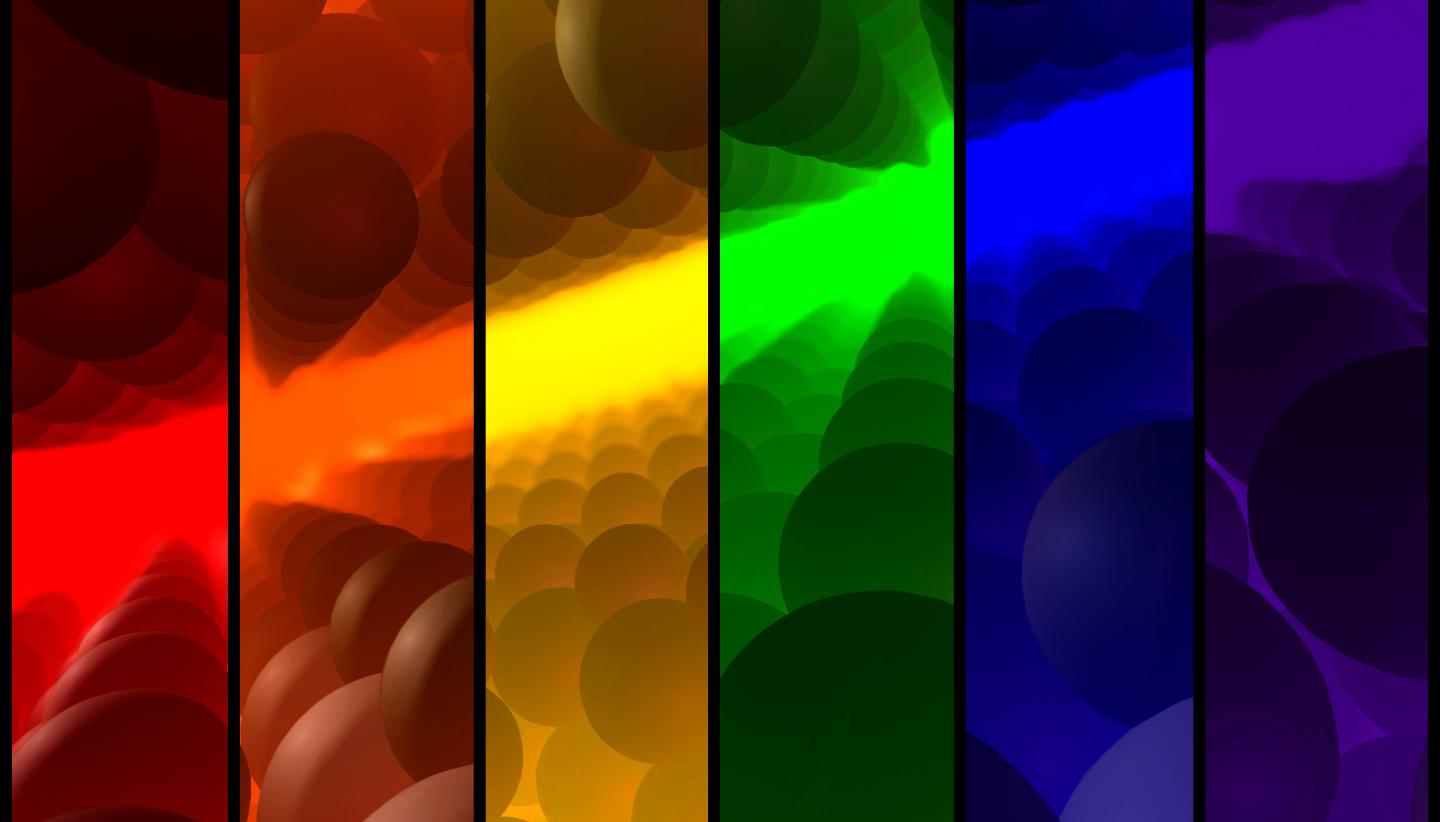Creating custom light using 2D materials

Researchers from UNIGE and the University of Manchester take an important step towards the future industrialisation of 2D materials
Researchers from the University of Geneva (UNIGE), Switzerland, in collaboration with the University of Manchester, have discovered that by combining various 2D semiconductors such as transition metal dichalcogenides (such as MoS2, MoSe2 and WS2) and InSe, these atomically thin crystals are capable of forming structures that emit customisable light in the desired colour. This research, published in the journal Nature Materials, marks an important step towards the future industrialisation of 2D materials.
Light emission occurs when an electron jumps inside the semiconductor from a higher energy level to a lower level. It is the difference in energy that determines the colour of the emitted light. For light to be produced, the velocity of the electron before and after the jump must be exactly the same, a condition that depends on the specific semiconducting material considered.
"We asked ourselves whether 2D materials could be used to make structures that emit light with the desired colour", explains Alberto Morpurgo, a professor in the Department of Quantum Matter Physics, at the UNIGE Faculty of Science.
Different 2D materials can be stacked on top of each other to form artificial structures that behave like semiconductors. The advantage of these "artificial semiconductors" is that the energy levels can be controlled by selecting the chemical composition and thickness of the materials that make up the structure.
"Artificial semiconductors of this kind were made for the first time only two or three years ago", explains Nicolas Ubrig, a researcher in the team led by professor Morpurgo. "When the 2D materials have exactly the same structure and their crystals are perfectly aligned, this type of artificial semiconductor can emit light. But it's very rare." These conditions are so strict that they leave little freedom to control the light emitted.
Custom light
"Our objective was to manage to combine different 2D materials to emit light while being free from all constraints", continues professor Morpurgo. The physicists thought that, if they could find a class of materials where the velocity of the electrons before and after the change in energy level was zero, it would be an ideal scenario which would always meet the conditions for light emission, regardless of the details of the crystal lattices and their relative orientation.
A large number of known 2D semiconductors have a zero-electron velocity in the relevant energy levels. Thanks to this diversity of compounds, many different materials can be combined, and each combination is a new artificial semiconductor emitting light of a specific colour. "Once we had the idea, it was easy to find the materials to use to implement it", adds professor Vladimir Fal'ko from the University of Manchester. Materials that were used in the research included various transition metal dichalcogenides (such as MoS2, MoSe2 and WS2) and InSe. Other possible materials have been identified and will be useful for widening the range of colours of the light emitted by these new artificial semiconductors.
Tailor-made light for mass industrialisation
"The great advantage of these 2D materials, thanks to the fact that there are no more preconditions for the emission of light, is that they provide new strategies for manipulating the light as we see fit, with the energy and colour that we want to have", continues Ubrig. This means it is possible to devise future applications on an industrial level, since the emitted light is robust and there is no longer any need to worry about the alignment of atoms.
The collaboration between UNIGE and the University of Manchester took place within the framework of the EU Graphene Flagship Project.
'Design of van der Waals interfaces for broad-spectrum optoelectronics' by Nicolas Ubrig et al; Nature Materials (2020)


































